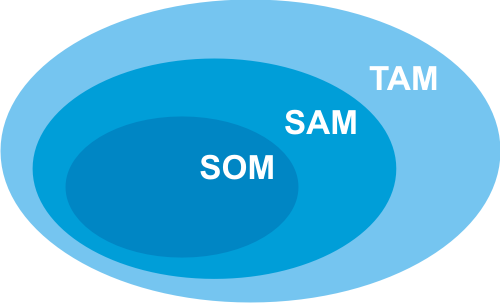Articles Description
Launching a new product is an exciting but challenging journey. To ensure a successful launch, startups need a well-defined Go-to-Market (GTM) strategy that provides a clear roadmap for reaching the target audience, communicating the product’s value, and driving customer acquisition. In this article, we’ll explore the essential elements of a GTM strategy and provide actionable tips to help you effectively bring your product to market.
1. Identify Your Target Market
Understanding your target market is the first step in creating a GTM strategy. It’s essential to know who your ideal customers are, what problems they face, and how your product can solve those problems.
- Segment Your Market: Divide your potential customers into segments based on factors like demographics, behaviors, and needs. This helps you tailor your messaging and approach to each group.
- Create Buyer Personas: Develop detailed profiles of your ideal customers, including their age, job role, pain points, and purchasing motivations. These personas help you visualize your audience and craft messages that resonate with them.
Tip: Use surveys, interviews, and market research to gather data on your target customers. The more you understand their needs, the better you can tailor your product and marketing efforts.
2. Define Your Unique Value Proposition (UVP)
Your Unique Value Proposition (UVP) is a clear statement that explains how your product solves a specific problem better than any alternative. It’s what sets you apart from competitors and gives customers a reason to choose your product.
- Focus on Customer Benefits: Instead of listing product features, highlight the key benefits your customers will experience. For example, if your product saves time, emphasize how it will help users be more productive.
- Keep It Simple and Clear: Your UVP should be concise and easy to understand. Avoid jargon and focus on the core value your product provides.
Template: "We help [target customer] solve [problem] by providing [solution], unlike [alternative], which [shortcoming of alternative]."
Example: "We help busy professionals organize their tasks and projects effortlessly with our intuitive task management app, unlike complex project management tools that require extensive setup."
3. Choose the Right Marketing Channels
Selecting the right marketing channels is crucial for effectively reaching your target customers. Consider where your audience spends time online and offline, and focus on channels that align with their preferences and behaviors.
- Digital Channels: Social media, email marketing, search engine optimization (SEO), and content marketing are powerful ways to reach and engage your audience. Use these channels to share valuable content, build brand awareness, and drive traffic to your website.
- Offline Channels: Depending on your target market, offline channels like events, trade shows, and partnerships can be effective. These channels offer opportunities for face-to-face interactions, building trust and credibility.
Tip: Start with a few key channels where you can make the most impact, then expand as you gather data on what works best for your audience.
4. Build a Detailed Go-to-Market Action Plan
A well-structured action plan outlines the specific steps you need to take to launch your product and achieve your marketing goals. Your plan should include pre-launch activities, launch activities, and post-launch follow-up.
- Pre-Launch Activities: Focus on generating buzz and building anticipation before the official launch. This could include teaser campaigns, early access offers, and influencer partnerships.
- Launch Activities: Execute your main marketing campaigns across selected channels. This is the time to go big with your messaging, emphasizing your UVP and encouraging users to try your product.
- Post-Launch Follow-Up: Collect feedback from early adopters, refine your product based on user insights, and focus on customer retention strategies like onboarding and support.
Example Action Plan:
- Week 1-2: Run a teaser campaign on social media and offer early access sign-ups.
- Week 3: Launch the product with a social media ad campaign, email blasts, and influencer promotions.
- Week 4-5: Analyze user feedback, make necessary product adjustments, and continue engaging customers with educational content.
5. Set Clear Metrics and KPIs for Success
To measure the effectiveness of your Go-to-Market strategy, it’s important to define key performance indicators (KPIs) and metrics. These metrics help you track progress, identify areas for improvement, and make data-driven decisions.
- Customer Acquisition Cost (CAC): The cost of acquiring each new customer. A lower CAC indicates more efficient marketing.
- Conversion Rate: The percentage of leads or visitors who become paying customers. Tracking conversion rates helps you understand the effectiveness of your marketing efforts.
- Customer Retention Rate: The percentage of customers who continue using your product after their first purchase. High retention rates indicate customer satisfaction and strong product-market fit.
Tip: Regularly review your metrics and use the data to adjust your strategy. If certain channels aren’t delivering results, consider reallocating resources to more effective ones.
6. Iterate Based on Feedback and Data
Launching your product is just the beginning. To build momentum and sustain growth, you need to continuously gather feedback from users and analyze performance data. Use these insights to refine your GTM strategy and improve your product.
- User Feedback Loop: Encourage customers to share their experiences, and listen closely to their suggestions. Use this feedback to make updates and enhancements that address user pain points.
- Data Analysis: Monitor your KPIs and track changes over time. Identify patterns and trends in customer behavior, and use this information to make informed decisions about future marketing efforts.
Example: If you notice that users frequently drop off during the onboarding process, consider simplifying your sign-up flow or adding tutorials to help new users get started.
Conclusion
Crafting a winning Go-to-Market strategy requires a deep understanding of your target market, a compelling value proposition, and a clear plan for reaching and engaging customers. By following these key steps—identifying your target market, defining your UVP, choosing the right channels, building an action plan, setting metrics, and iterating based on feedback—you’ll be well-positioned for a successful product launch.
Remember, a GTM strategy is a dynamic plan that evolves as you gather data and learn more about your customers. Stay flexible, listen to your users, and make adjustments as needed to achieve long-term growth and success.

 Madarek Article
Madarek Article

















